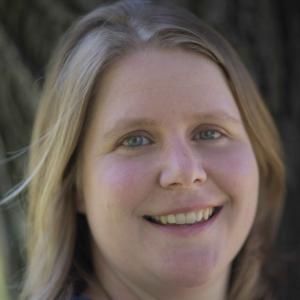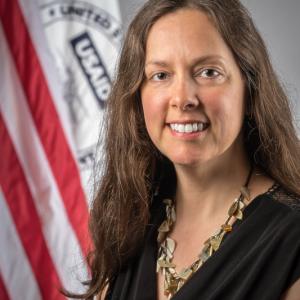Bridging the Divide for Success in Nutrition-Sensitive Agricultural Market Development
It’s not often that we experience one of those eye-opening moments when our perspective shifts and we can appreciate someone else’s view from across a divide. This is the story of how two USAID staff had that moment and how they hope to create it for others working in nutrition and agricultural market development.
Kristin O’Planick, Bureau for Economic Growth, Education & Environment: We had this wonderful idea for collaboration between the Leveraging Economic Opportunities (LEO) and Strengthening Partnerships, Results, and Innovations in Nutrition Globally (SPRING) activities on nutrition-sensitive agricultural market development. Our conversations were like a series of light bulbs going on for me. Even how we interpreted basic terms could be so different — for example, processing has good connotations for market folks but bad for nutrition folks. Learning some of these things made for much better communication between us.
Sally Abbott, Bureau for Food Security: I too had a breakthrough moment when I realized we were using some basic terms — like “vulnerable” — in a very different context and manner. On the nutrition side, we also dug deeper into the Agriculture to Nutrition Pathways. We recognized that while it can be an incredibly useful tool, the role that markets play in nutrition is not adequately incorporated — it was just a box on the side of the framework. We were missing a huge opportunity for collaboration.
Through their work together, they developed a discussion paper, Convergence and Tension in Nutrition-sensitive Agricultural Market Development Activities, and held a webinar on the topic. Categories covered include beneficiary targeting, intervention approach, commercialization of food, and monitoring and evaluation.
Sally: Identifying areas of convergence and tension helped move the meter on conversations and programming. We were able to discuss tangible ways we could work together. We used the paper as the basis of an incredibly interesting discussion at the Multi-Sectoral Nutrition GLEE in Ghana. This feedback from the meeting helped us to refine the paper.
Kristin: After all these conversations, we ended up with lists of ways that nutrition and agricultural market development either did or did not have synergies. We highlighted some of those in the discussion paper in the hopes of triggering more conversations between our respective areas of expertise. For example, how can you target pregnant and lactating women and children under two when you are facilitating change in markets through agribusinesses? These are some tricky questions that need to be explored.
Sally: The paper recognizes that we don’t have all of the answers, but there are some pretty clear areas that could be worked on together. For instance, both nutrition and agricultural market development activities seek to change behavior and improve practices. SPRING has been developing an online training on Accelerating Behavior Change for Nutrition Sensitive Agriculture, for which LEO was key in shaping initial thinking. It was helpful that we did not have to start from scratch.
Kristin: What I love most about the paper is how practical it is. Increasingly, there is a sentiment that integrating various subject areas will lead to better development programming. And there can be efficiencies where things dovetail nicely or lend support from a new leverage point. But there are also some trade-offs in that integration process. I don’t think that is necessarily a bad thing, as long as we understand the choices we are making as we design these programs. The paper is one of the few times I’ve seen these issues articulated so well.
Sally: The paper has also broadened my knowledge of our work across the Agency. By working on something pragmatic, I was able to learn much more about the market systems approach, which I find fascinating. I am constantly pointing to the paper as a place to start conversations and to show how we need to think a bit more outside the box in our programming. It’s also been great to have a colleague in another part of the Agency that I can reach out to whenever I have questions on an area I know only a little about.
Kristin: I know that this collaboration process has dramatically changed my ability to understand and engage with nutrition colleagues. I learned that I love working with Sally! It’s striking to me that every category we examined had cases of both convergence and tension, reminding us that we need to be very intentional as we move forward with these programs. The paper has been a great reference every time I need to engage in a nutrition-sensitive agriculture conversation. And I think those working to implement and manage these types of programs in the field will greatly benefit from it too.
Sally: One final point: We would love additional feedback! Let us know if you have any questions or comments.



